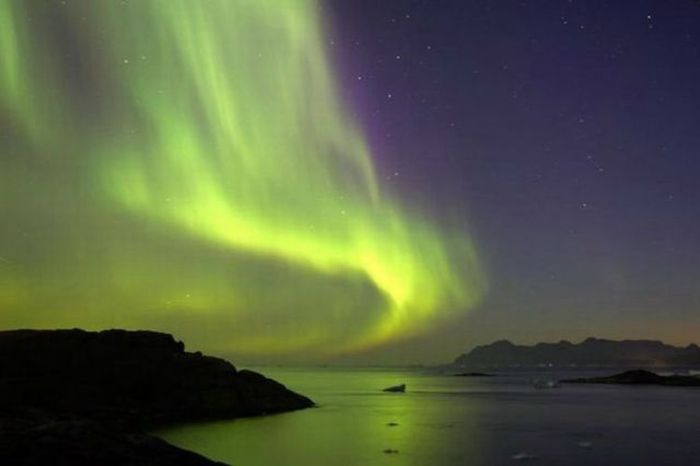|
|
Aurora, Amazing Northern Lights
|
3. Satellite images of the aurora from above show a "ring of fire" along the auroral oval , often widest at midnight. That is the "diffuse aurora", not distinct enough to be seen by the eye. It does not seem to be associated with acceleration by electric currents (although currents and their arcs may be embedded in it) but to be due to electrons leaking out of the magnetotail.
Any magnetic trapping is leaky—there always exists a bundle of directions ("loss cone") around the guiding magnetic field lines where particles are not trapped but escape. In the radiation belts of Earth, once particles on such trajectories are gone, new ones only replace them very slowly, leaving such directions nearly "empty". In the magnetotail, however, particle trajectories seem to be constantly reshuffled, probably when the particles cross the very weak field near the equator. As a result, the flow of electrons in all directions is nearly the same ("isotropic"), and that assures a steady supply of leaking electrons.
The energization of such electrons comes from magnetotail processes. The leakage of negative electrons does not leave the tail positively charged, because each leaked electron lost to the atmosphere is quickly replaced by a low energy electron drawn upwards from the ionosphere. Such replacement of "hot" electrons by "cold" ones is in complete accord with the 2nd law of thermodynamics.
Other types of auroras have been observed from space, e.g. "poleward arcs" stretching sunward across the polar cap, the related "theta aurora", and "dayside arcs" near noon. These are relatively infrequent and poorly understood. There are other interesting effects such as flickering aurora, "black aurora" and subvisual red arcs. In addition to all these, a weak glow (often deep red) has been observed around the two polar cusps, the "funnels" of field lines separating the ones that close on the day side of Earth from lines swept into the tail. The cusps allow a small amount of solar wind to reach the top of the atmosphere, producing an auroral glow.
|
|









